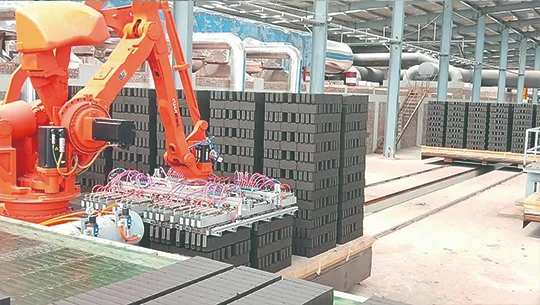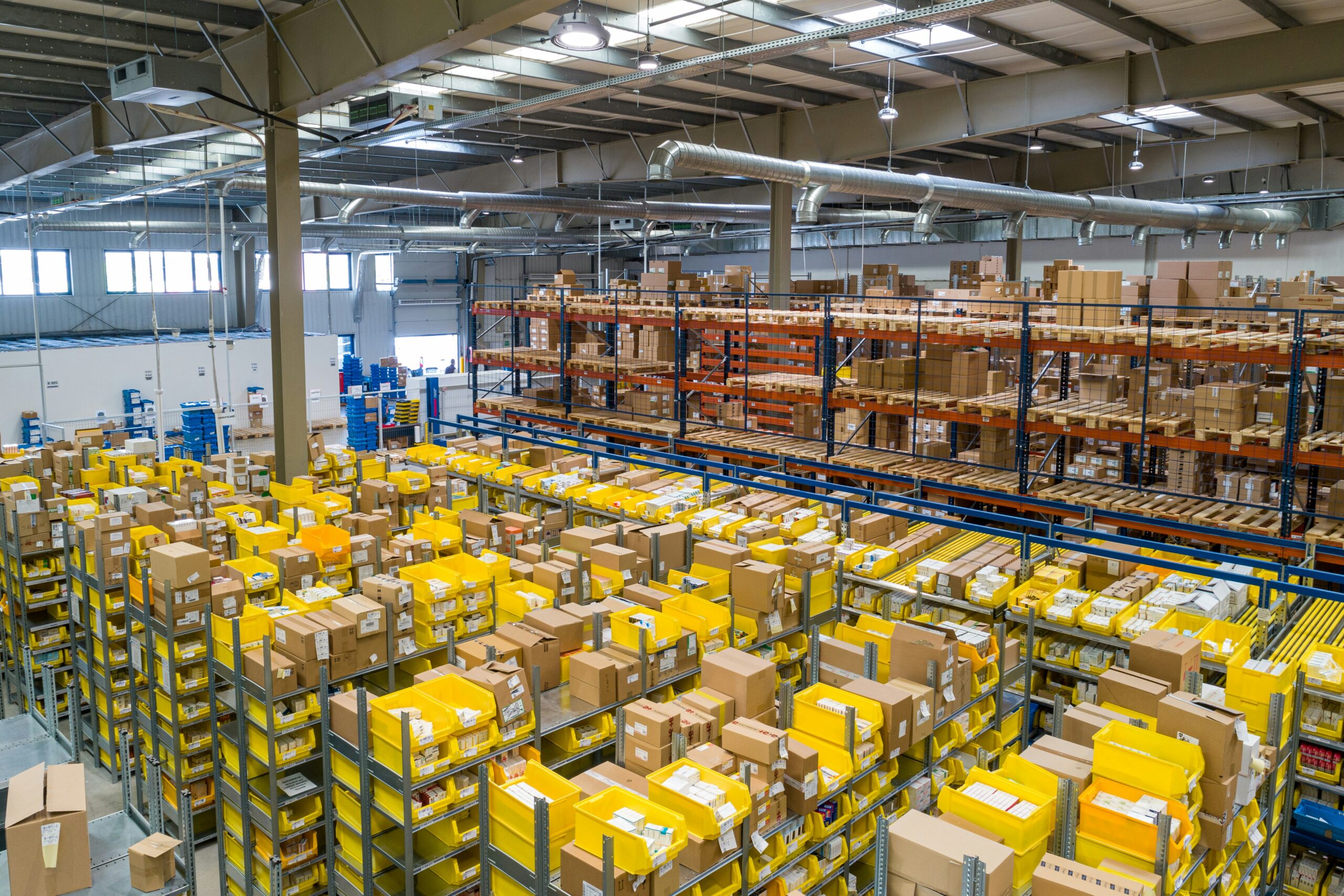Introduction
Over the past few decades, there has been a tremendous development in the distribution center environment. From manually run warehouses to fully automated hubs, operations have significantly increased in speed and efficiency. Palletizing robots and robotics in logistics, which have simplified procedures, improved accuracy, and decreased operating costs, are at the center of this revolution. Using the QJRB800-1 robotic arm as a prominent example, this essay examines the future of distribution centers with a particular emphasis on the function of palletizing robots and the wider implications of robotics in logistics.
Distribution Center Evolution
Conventional Warehouses
Palletizing, packaging, and sorting were among the physical labor-intensive operations that distribution facilities traditionally depended primarily on. Employees would be physically exhausted and incur significant labor expenses as a result of spending endless hours lifting and carrying goods. These centers’ performance was frequently constrained by human limitations, which led to longer processing times and a greater chance of mistakes.

Technological Progress
Distribution centers saw substantial changes with the advent of automation. Barcode scanners, automatic sorting systems, and conveyors all contributed to operational efficiency by lowering the need for manual labor. These developments made it possible to incorporate robotics, which improved the precision and efficiency of distribution procedures even further.
Present Patterns
Modern technologies, such as robots, machine learning, and artificial intelligence (AI), are being quickly incorporated into distribution facilities. Facilities can now handle larger amounts of items faster and more precisely thanks to these advances. Due to their considerable advantages over conventional techniques, the usage of palletizing robots has grown significantly.
Overview of Palletizing Robots: Definition and Operation
Automated devices called palletizing robots are made to effectively place goods onto pallets. These robots, which have sophisticated software and sensors, can handle a wide range of things, from large objects to lightweight packets. Their precise operations guarantee that things are stacked safely and in the best possible arrangement.

Advantages Compared to Hand Palletizing
Palletizing robots have various benefits over manual palletizing. First of all, their productivity may be greatly increased by working continually without being tired. Second, they lessen the possibility of accidents at work brought on by heavy lifting. The danger of product damage during handling is reduced by palletizing robots, which also guarantee uniformity and precision.
Important Sectors Using Palletizing Robots
To improve their operations, a number of industries have embraced palletizing robots. These robots are used, for example, by the food and beverage sector to handle breakable objects and uphold hygienic requirements. For effective handling of large components, the industrial industry uses palletizing robots. These robots are also used by retail and e-commerce businesses to handle large order volumes and guarantee on-time delivery.
Product Overview and Highlights for the QJRB800-1 Palletizing Robot
A high-load palletizing machine made for heavy-duty applications is the QJRB800-1. This robotic arm can easily handle big, heavy objects thanks to its 800 kg payload capacity and 3159 mm reaching distance. It is the perfect answer for companies needing efficient palletizing because of its high speed operation and steady performance.

Important attributes and skills
Because of its sophisticated algorithms, this robotic arm can function at a minimal power output while yet achieving great speed. Its repetitive positioning precision of ±0.5mm guarantees accurate product stacking. The QJRB800-1 offers a dependable and effective palletizing solution because of its sturdy construction and straightforward equipment composition, which make it simple to incorporate into current processes.
Use Cases
For heavy-duty palletizing applications like those found in brick manufacturers, the QJRB800-1 is especially well suited. Its great speed and capacity to manage heavy loads make it a priceless tool in settings where dependability and efficiency are critical. Companies may increase efficiency and safety significantly by integrating this robotic arm into their operations.
Benefits of Robotics in Logistics: Increased Speed and Efficiency
The notable acceleration and efficiency gain from robotics in logistics is one of its main advantages. Robots can reduce the amount of time needed for repetitive operations like sorting, packaging, and palletizing since they can do them consistently and accurately. This enables the handling of larger volumes of items and quicker turnaround times.
Enhanced Safety and Accuracy
Accuracy and safety in logistics are further improved by robotics. Robots can recognize and adjust to their environment thanks to sensors and software installed in them. This guarantees that items are handled carefully by lowering the possibility of mistakes and mishaps. Furthermore, robots lower the danger of occupational injuries by taking over physically demanding activities, making the workplace safer for human workers.
Reduction of Expenses and Return on Investment
Even though robotics may need a large initial investment, there will be considerable long-term cost reductions. Robots save labor expenses since they can work nonstop for extended periods of time. Their speed and accuracy in completing activities reduces the possibility of product damage and returns. Because of this, businesses may obtain a high return on investment, which makes robotics in logistics a wise financial decision.
Examples from the Real World and Case Studies
First Case Study: Brick Factory Employing QJRB800-1
The QJRB800-1 robotic arm was used by a brick business to manage palletizing its goods. Bricks were manually placed into pallets by laborers prior to automation, which was a labor-intensive and time-consuming procedure. The plant was able to greatly enhance its manufacturing capacity by incorporating the QJRB800-1. Due to its rapid operation and careful stacking, the robot avoided product damage and cut down on palletizing time, increasing overall productivity and profitability.
Case Study No. 2: Online Store
Peak seasons presented management issues for an e-commerce warehouse due to the large volume of orders. Their business was changed by the introduction of palletizing robots. In order to ensure that orders were completed promptly and precisely, these robots sorted and stacked parcels with efficiency. Due to the warehouse’s ability to quickly fulfill client needs, shipping faults were decreased and customer satisfaction increased.
Results and Advantages Noted
The use of palletizing robots led to notable increases in productivity, accuracy, and security in both case studies. Businesses saw improvements in consumer satisfaction, lower labor costs, and expanded production capacity. These actual cases demonstrate the revolutionary effect of robotics in logistics as well as the prospective advantages for a range of sectors.

Upcoming Developments and Trends in Logistics Robotics
AI and machine learning advancements
AI and machine learning breakthroughs are crucial to the future of robotics in logistics. With the help of these technologies, robots may gain experience and gradually become more proficient. Robots with AI capabilities, for instance, may adjust their motions to maximize efficiency and adjust to shifting surroundings. In order to further increase efficiency, machine learning algorithms can also assist robots in anticipating demand patterns and modifying their activities accordingly.
IoT and smart warehousing integration
Another developing trend is the combination of robots with smart warehousing and the Internet of Things (IoT). Real-time data on inventory levels, equipment status, and environmental conditions may be obtained via IoT devices. Robots are able to improve their operations and make well-informed judgments by utilizing this data. With their networked systems, smart warehouses are able to synchronize the actions of several robots, guaranteeing smooth and effective operations.
Possible Difficulties and Remedies
Although robotics in logistics has a bright future, there are still a number of issues that need to be resolved. One difficulty is the expensive initial outlay for putting robotic equipment into place. However, it is anticipated that the cost of robots will go down as economies of scale are achieved and technology progresses. The requirement for specialized workers to oversee and operate robotic systems presents another difficulty. To get over this challenge, funding training initiatives and building a qualified staff are imperative.
In summary
Undoubtedly, the future of distribution centers is closely linked to the progress made in palletizing robots and robotics in logistics. These innovations have the power to completely transform processes while improving accuracy, efficiency, and safety. A good illustration of the capabilities and advantages of palletizing robots is the QJRB800-1 robotic arm. Distribution centers have a great deal of room for development as long as industry embrace and experiment with robotics. It will be imperative for businesses to adopt these innovations if they want to remain competitive in an increasingly automated environment.
